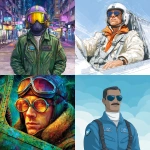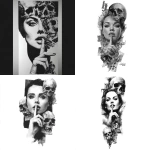Explore the Best AI Image Gallery
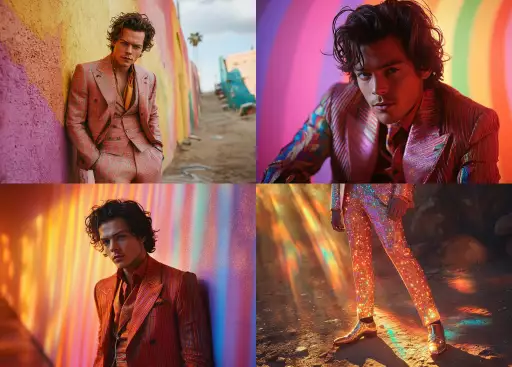
Quantum Creativity: Unlocking New Dimensions in the Artistic Realm
The realm of creativity is on the cusp of a paradigm shift, driven by the burgeoning field of quantum computing. This revolutionary technology, with its ability to process information at an unparalleled scale, holds immense potential for artists, designers, and innovators, ushering in an era of unprecedented artistic expression and exploration.
Quantum computers leverage the principles of quantum mechanics to perform complex calculations far beyond the capabilities of classical computers. This opens doors to novel algorithms and techniques that can be harnessed to create immersive experiences, generate stunning visuals, and push the boundaries of artistic mediums.
Potential Uses in the Creative Industry
- Generative Art: Quantum algorithms can generate intricate and unique artworks based on complex parameters and data sets. Imagine AI-powered tools capable of crafting mesmerizing visual patterns, surreal landscapes, or abstract sculptures informed by quantum principles.
- Interactive Experiences: Quantum computing can enhance interactive installations and performances. Real-time data analysis and feedback loops powered by quantum processors could create dynamic and responsive artistic environments that react to audience participation.
- Music Composition: Quantum algorithms can analyze musical patterns, harmonies, and melodies to generate original compositions or variations on existing pieces. This opens up exciting possibilities for collaborative music creation between humans and AI.
- Virtual and Augmented Reality: Quantum computing can significantly improve the realism and interactivity of virtual and augmented reality experiences. Imagine immersive worlds with hyper-realistic environments, intricate simulations, and responsive characters driven by quantum-powered AI.
Ethical Considerations
As with any powerful technology, quantum computing raises ethical considerations that must be carefully addressed in the creative context:
- Ownership and Copyright: Who owns the copyright to artworks generated by quantum algorithms? How do we establish intellectual property rights in a world where AI can create original works?
- Bias and Representation: Quantum algorithms are trained on data, and if that data reflects existing societal biases, the resulting artworks could perpetuate harmful stereotypes. Its crucial to ensure fairness and inclusivity in the development and deployment of quantum-powered creative tools.
- Access and Equity: The high cost of quantum computing resources could create a digital divide, limiting access to these powerful tools for marginalized communities or independent artists.
Future Trends
The convergence of quantum computing and creativity is still in its early stages, but the future holds immense promise:
- Quantum-Inspired Art: Artists may draw inspiration from quantum phenomena to create works that explore themes of superposition, entanglement, and uncertainty.
- Personalized Creative Experiences: Quantum computing could enable highly personalized artistic experiences tailored to individual preferences and emotions.
- Decentralized Creativity Platforms: Blockchain technology combined with quantum computing could foster decentralized platforms where artists can collaborate, share their work, and receive fair compensation for their creations.
As we venture deeper into the age of quantum computing, the boundaries between art and science will continue to blur. The creative industry stands on the precipice of a new era, one where imagination knows no limits and the possibilities are truly boundless.

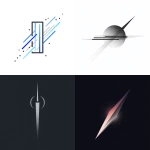
](https://images.ai-img.art/thumbnails/150/85464d88f1d4314cd042a02a6f41440fc3b4343db529794cbe8e6836fdadf409.webp)
](https://images.ai-img.art/thumbnails/150/b90a5f332cb5d8f02116934e13abd20233e0eeb2368274dbdffaa2e281e4dff5.webp)
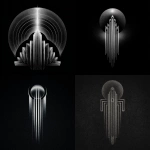


](https://images.ai-img.art/thumbnails/150/9127f72c6be19d533c26ac476f4d216cd89a6a2d7c351333489a3eff30c3ec5a.webp)

](https://images.ai-img.art/thumbnails/150/336026613fd234b8d6908fe18ecc09b2b2ecf7b8dfe294742041c9862dc499c1.webp)


](https://images.ai-img.art/thumbnails/150/d29fcfc8037938184a641f7980e1102e24a6e82088bc465886d26ffe5bb006c7.webp)

](https://images.ai-img.art/thumbnails/150/4a4f2a16da94ebadad64aeb3b0fb4e64d426431f1d651cc4929142c728fe85b7.webp)

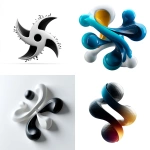

















](https://images.ai-img.art/thumbnails/150/24610c8978ce6b4f1ced8639b434482871adb07e38af8b90cd535f2533bf18cc.webp)







](https://images.ai-img.art/thumbnails/150/37f115f2fa75765b87e6d3e2c9f1b0a80a6a46efa8b864a05278c7fc0a0a62e7.webp)

